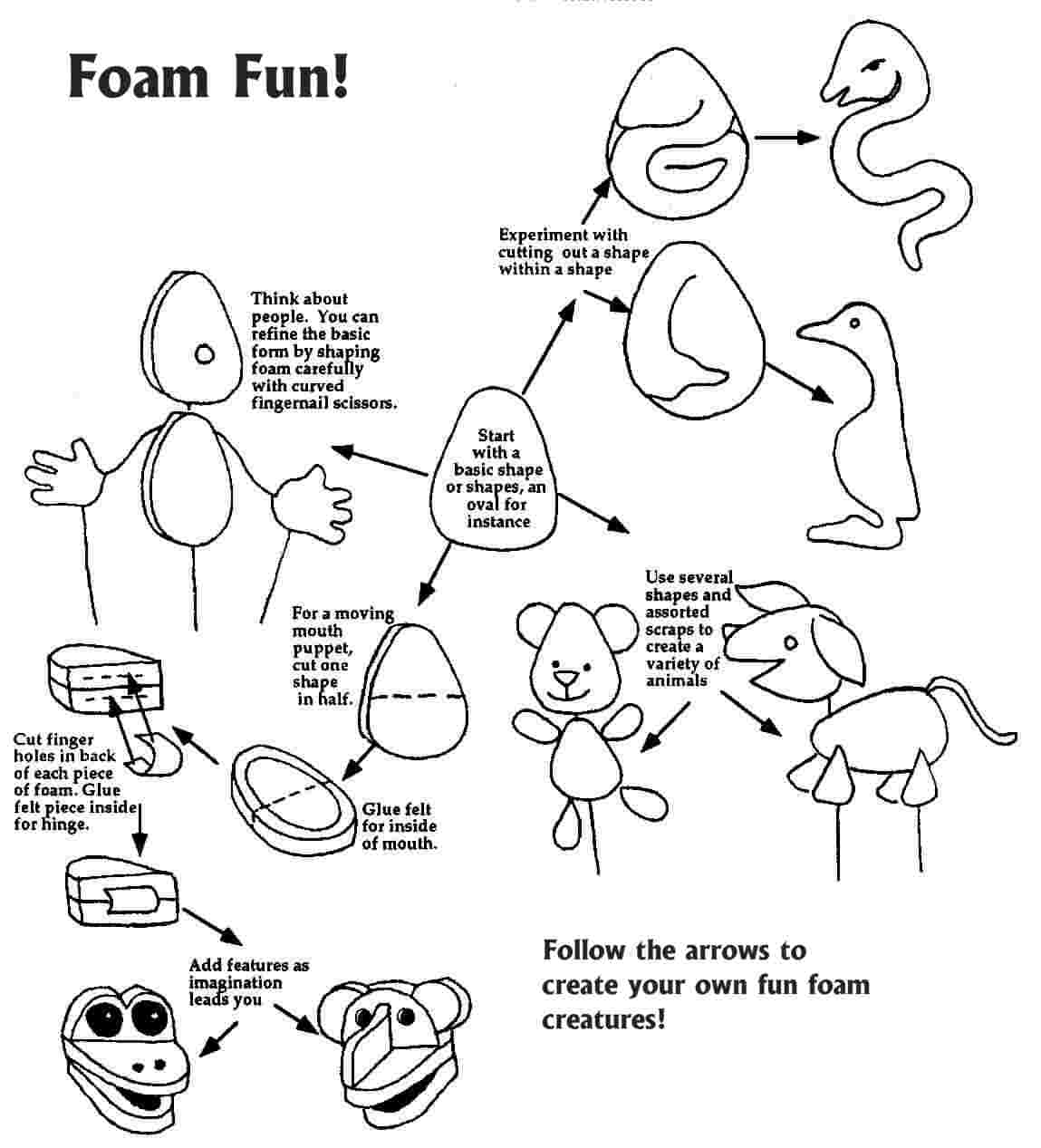
Lynne's Foam Puppet Possibilities
Basic Supplies:
---Bodies: Foam shapes and scraps
---Rod Controls: BBQ skewers, dowels, coat hangers, pencils, etc.
---Eyes: shank eyes from hobby store, stickers, buttons, sequins, pompoms, etc.
---Hair: fake fur, yarn, boa, recording tape, ribbon, curled paper, etc.
---Clothing: soft, flexible material, old socks, facial tissue, used fabric softener sheets, etc.
---Adhesive: hot glue (best used with adult supervision)
Although foam is not a long lasting or particularly rugged building material, it is flexible, easily shaped and offers wonderful movement possibilities for quickly made puppets. It comes in a variety of thicknesses and densities. One inch thick foam is good for starting out. It can be found in many places. If you plan on making a lot of puppets, buy a mattress pad at your local upholstery or camping supply store. Smaller pieces can be purchased by the foot or yard at many craft, fabric, or building supply stores or collected out of shipping boxes. It can be dyed with grocery store variety dyes, sprayed with floral spray, or colored with felt tip markers or acrylic paints. Dying is suggested, as the color permeates the whole block of foam rather than just the surface.

Foam can be cut with scissors, an electric carving knife, razor blade or band saw. You can start with a variety of free form shapes and pick ones that appeal to you or, as shown here, start with one basic shape and see how many different kinds of puppets you can come up with from the same initial building blocks. As you are cutting your foam shapes, be sure to save the scraps for additional features. And, if you are dying the foam, it is easier to cut it all first (dye a few extra scrap pieces at the same time in case you get ideas for new features or make a mistake.)